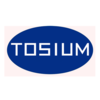Al-Mg-Mn-Sc-Zr合金攪拌摩擦焊接頭顯微組織、力學性能及腐蝕性能Al-Mg-Mn-Sc-Zr合金攪拌摩擦焊接頭顯微組織、力學性能及腐蝕性能Microstructure, mechanical properties and corrosion properties of friction stir welded Al-Zn-Mg-Sc-Zr alloy 采用硬度測試、金相顯微、透射電鏡、慢應變速率拉伸、掃描電鏡和極化曲線對2 mm厚Al-Mg-Mn-Sc-Zr冷軋-退火板材攪拌摩擦焊接頭的顯微組織、力學性能及腐蝕性能進行了研究。結果表明:焊接接頭的硬度相比母材有所降低,硬度最低值出現在前進側攪拌區與熱機影響區的交界處;焊接接頭在空氣中和3.5% NaCl(質量分數)溶液中的抗拉強度和伸長率均低于母材的,且應力腐蝕敏感性增加。此外,在焊接接頭中,熱機影響區是耐蝕性最差的區域,但是在空氣和3.5% NaCl溶液中的拉伸試樣均斷裂在厚度最薄的攪拌區而不是耐蝕性最差的熱機影響區,可見應力腐蝕對試樣斷裂的影響有限,說明Al-Mg-Mn-Sc-Zr合金攪拌摩擦焊接頭具有較好的抗應力腐蝕性。 The microstructure, mechanical properties and corrosion properties of friction stir welded (FSW) Al-Mg-Mn-Sc-Zr alloy were studied by hardness test, optical microscope (OM) analysis,transmission electron microscope (TEM) analysis,slow-strain-rate tensile (SSRT) test, scanning electron microscope (SEM) analysis and polarisation curve testing. The results show that the microhardness of FSW joint is lower than that of the base metal (BM), and the lowest hardness appears in the thermo-mechanical affected zone (TMAZ). Moreover, according to the SSRT test, the tensile strength and elongation of FSW joint are lower than those of the BM both in air and in 3.5%NaCl (mass fraction) solution. The polarization curve results reveal that the TMAZ exhibits lowest corrosion resistance, the samples are subjected to slow strain rate stretching in air or in 3.5% NaCl (mass fraction) solution, the fracture area is always observed in the thinnest stirred zone (SZ) rather than the TMAZ with worst corrosion resistance. It can be concluded that the stress corrosion does not dominant the cracking, and the friction stir welded Al-Zn-Mg-Sc-Zr alloy exhibits preferable stress corrosion resistance.
|







